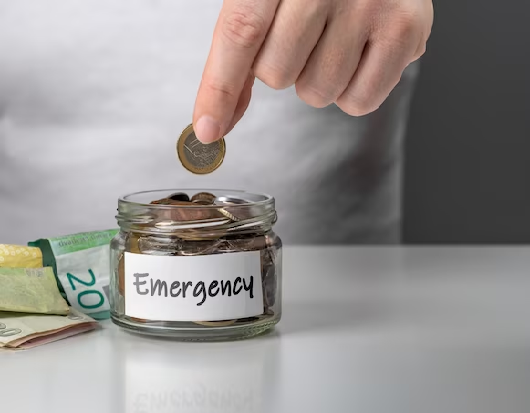Introduction
Are you drowning in credit card debt? Do you feel overwhelmed and unsure of where to start? You’re not alone. Many people find themselves in a similar situation, but there is a solution – the debt snowball method. This credit card debt reduction plan has gained popularity for its effectiveness in helping individuals eliminate their debts. In this comprehensive guide, we will explore the snowball method, how it works, its pros and cons, and alternative strategies. By the end, you’ll be equipped with the knowledge and tools to take control of your finances and work towards a debt-free future.
Understanding the Debt Snowball Method
The debt snowball method is a debt reduction strategy that focuses on paying off your smallest debts first. It is based on the principle that by tackling smaller debts first, you create a sense of accomplishment and momentum, propelling you towards your larger financial goals. This method was popularized by financial expert Dave Ramsey and has helped numerous individuals successfully eliminate their credit card debt.
How Does the Debt Snowball Method Work?
To implement the debt snowball method, you need to follow a step-by-step process. Here’s a breakdown of how it works:
- List Your Debts: Start by gathering all your credit card and other unsecured debts. Make a comprehensive list, including the outstanding balance, minimum monthly payment, and interest rates.
- Order Your Debts: Arrange your debts in order of smallest to largest balance. Ignore the interest rates at this stage; the focus is on the size of the debt.
- Pay Minimums and Add Extra: Make sure you pay the minimum monthly payment on each debt to avoid any penalties. Then, allocate any extra funds you have towards paying off the smallest debt.
- Snowball Effect: Once you’ve paid off the smallest debt, take the money you were putting towards it and add it to the minimum payment of the next smallest debt on your list. This increases the amount you can put towards the next debt, creating a snowball effect.
- Repeat and Accelerate: Keep repeating this process, rolling over the payments from each paid-off debt to the next one on your list. Over time, your payments towards larger debts will grow, accelerating your progress towards debt freedom.
The Psychology Behind the Debt Snowball Method
The debt snowball method differs from other debt reduction strategies, such as the debt avalanche method, which prioritizes paying off debts with the highest interest rates first. The key to the snowball method’s success lies in its psychological impact. By starting with small wins, paying off smaller debts quickly, you experience a sense of accomplishment and motivation to continue the journey.
Dave Ramsey believes that the debt snowball method is more about behavior change than financial optimization. It helps individuals build momentum, gain confidence, and develop positive financial habits. When you see your debts disappearing one by one, it boosts your confidence and provides the motivation needed to tackle larger debts.
The Role of Psychological Factors
Psychological factors play a significant role in our financial decisions and actions. Studies conducted by professors at Northwestern University’s Kellogg Business School have shown that psychological factors, such as the feeling of accomplishment from paying off a smaller debt, can be helpful in paying off debt. These small wins create a positive feedback loop, reinforcing your commitment to becoming debt-free.
Jeremy Newsome, the CEO of Real Life Trading, is a strong advocate for the debt snowball method. He believes that anyone can pay off their credit card debt within three to four years by following this approach. The psychological aspect of the snowball method keeps individuals engaged, motivated, and on track to achieving their financial goals.
Pros and Cons of the Debt Snowball Method
Like any financial strategy, the debt snowball method has its advantages and disadvantages. Understanding these pros and cons will help you determine if it’s the right approach for you.
Pros of the Debt Snowball Method
- Motivation and Momentum: By paying off smaller debts first, you experience a sense of accomplishment and motivation to continue the debt payoff journey.
- Psychological Benefits: The snowball method leverages psychological factors to keep you engaged and committed to paying off your debts.
- Behavior Change: The focus on behavior change helps you develop positive financial habits and improve your overall financial well-being.
- Quick Wins: Paying off smaller debts quickly provides a sense of progress and encourages you to keep going.
Cons of the Debt Snowball Method
- Higher Interest Payments: The snowball method doesn’t prioritize debts with the highest interest rates, which means you may end up paying more in interest over time.
- Longer Debt Repayment Period: Since you start with smaller debts, it may take longer to pay off larger debts, resulting in an extended repayment period.
- Financial Optimization: The snowball method may not be the most financially optimal strategy, especially if you have high-interest debts.
- Not Suitable for Everyone: The snowball method’s emphasis on psychology may not resonate with everyone. Some individuals may prefer a more mathematically-driven approach.
Alternatives to the Debt Snowball Method
While the debt snowball method has proven effective for many individuals, it’s essential to explore alternative strategies to find the right fit for your specific financial situation. Here are a few alternatives to consider:
Debt Avalanche Method
The debt avalanche method focuses on paying off debts with the highest interest rates first. By targeting high-interest debts, you minimize the amount of interest you pay over time. Although it may take longer to see progress, the debt avalanche method can save you money in the long run.
Debt Consolidation
Debt consolidation involves combining multiple debts into one loan or credit card with a lower interest rate. This allows you to simplify your payments and potentially reduce the amount of interest you pay. However, it’s crucial to weigh the pros and cons of debt consolidation and ensure that it aligns with your financial goals.
Debt Management Plan
A debt management plan (DMP) involves working with a credit counseling agency to negotiate lower interest rates and create a structured repayment plan. This can help you pay off your debts more efficiently and often involves reducing or eliminating late fees and over-limit charges. It’s essential to choose a reputable credit counseling agency and fully understand the terms and fees associated with a DMP.
Perfecting Your Debt Payoff Strategy
Regardless of the method you choose, there are certain steps you can take to maximize your debt payoff journey. These steps will help you stay on track and ultimately achieve your financial goals.
Build an Emergency Fund
Before embarking on any debt payoff strategy, it’s crucial to have an emergency fund in place. Life is unpredictable, and unexpected expenses can derail your progress. Aim to have three to six months’ worth of living expenses saved in an easily accessible account. This will provide a safety net and give you peace of mind as you work towards becoming debt-free.
Stay Current on Your Bills
Paying your bills on time is essential for maintaining a good credit score and avoiding late fees. Make sure you stay up-to-date on all your current bills while implementing your debt payoff strategy. If necessary, contact your creditors to discuss potential options such as adjusting due dates to align with your budget.
Track Your Spending
To stay on top of your finances and avoid accumulating new debts, it’s crucial to track your spending carefully. Create a budget that aligns with your debt payoff goals and monitor your expenses regularly. This will help you identify areas where you can cut back and free up more money to put towards debt repayment.
Monitor and Improve Your Credit Score
Paying down your debts can have a positive impact on your credit score over time. As you make progress, regularly check your credit score and monitor any changes. Celebrate small wins along the way as your credit score improves, reinforcing your commitment to financial responsibility.
Conclusion
Paying off credit card debt is a challenging but achievable goal. The debt snowball method offers a structured and motivating approach to debt reduction. By focusing on small wins and building momentum, you can gain control over your finances and work towards a debt-free future. However, it’s essential to consider alternative strategies and choose the approach that aligns with your financial goals and personal preferences. With dedication, discipline, and the right strategy, you can overcome your credit card debt and achieve financial freedom.




